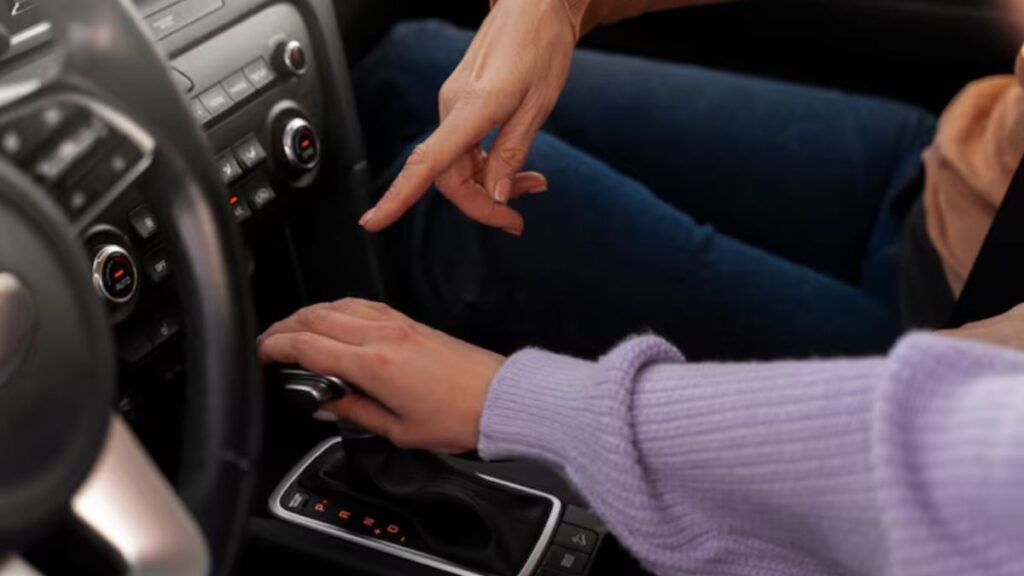Driving is more than just getting from point A to point B; it’s an art form. One of the most critical yet often overlooked aspects of this art is mastering the gear shift—particularly, switching 2nd gear. Whether you’re a novice driver or have years behind the wheel, understanding how to smoothly transition into second gear can elevate your driving experience and enhance your vehicle’s performance.
Imagine gliding through traffic with seamless shifts that feel almost instinctual. That’s what mastering switching 2nd can do for you. It not only improves acceleration but also contributes to fuel efficiency and overall control of your car. Ready to dive into the world of smooth driving? Let’s explore how perfecting this skill can transform your time on the road!
The Importance of Mastering Switching 2nd
Mastering switching 2nd is crucial for any driver looking to enhance their skills. It’s the gear that bridges the gap between first and third, allowing for a seamless driving experience.
When you shift into second gear, you harness more power and torque. This allows your vehicle to accelerate smoothly without excessive strain on the engine. A smooth transition not only feels better but also prolongs the life of your car.
This skill becomes especially valuable in various driving conditions. Navigating hills or merging onto highways demands precise control over speed and acceleration. Being adept at shifting into second lets you respond quickly to changing situations.
Moreover, mastering this technique boosts confidence behind the wheel. You’ll find yourself more in tune with your vehicle’s capabilities, making every drive feel like a well-choreographed dance rather than a clumsy struggle through gears.
Understanding the Different Gears and Their Functions
Understanding the different gears in a vehicle is crucial for smooth driving. Each gear has its own function and plays a vital role in how your car performs.
First, we have first gear. It’s designed for starting from a complete stop and helps you gain initial traction. Once you’re moving, it’s time to shift up.
Second gear comes next. This gear allows for acceleration while maintaining control at lower speeds. It’s especially useful when navigating city streets or making sharp turns.
As you accelerate further, third and higher gears take over. They provide greater speed while reducing engine strain, perfect for highway driving.
Each transition between gears requires finesse to maintain momentum without jerking the vehicle. Understanding these functions not only enhances your driving experience but also prolongs the life of your car’s transmission system.
Steps to Switching Gears Smoothly
To switch gears smoothly, start by easing off the accelerator. This helps reduce engine load and prepares your vehicle for a seamless transition.
Next, press the clutch pedal fully to disengage the engine from the wheels. This step is crucial for preventing jerks or stalling as you shift.
Now, move your gear stick to second gear. Make this motion deliberate but gentle; forcing it can lead to damage.
Once in position, gradually release the clutch while simultaneously applying pressure on the accelerator. The sweet spot lies in striking a balance between both pedals.
Listen closely to your engine’s response. It should purr gently as you engage second gear without jarring movements.
Practice makes perfect! Regularly integrating these steps into your driving routine will enhance fluidity and confidence over time.
Common Mistakes and How to Avoid Them
When it comes to switching 2nd, many drivers make common mistakes that can lead to stalling or rough shifts. One frequent error is rushing the transition. Patience is key; allow your vehicle’s speed and engine RPM to align before making the shift.
Another mistake involves not fully depressing the clutch pedal. Failing to do so can cause grinding gears and premature wear on your transmission. Always ensure you press down completely for a smooth change.
Some drivers also neglect to pay attention to their surroundings while shifting. Keep an eye on traffic conditions and road inclines, as these factors influence when you should switch gears.
Overthinking the process can create anxiety and hesitation. Trust your instincts and practice consistently until switching feels natural—this will improve both your confidence and driving experience significantly.
Practice Makes Perfect: Tips for Improving Switching 2nd Skills
To improve your switching 2nd skills, consistent practice is essential. Set aside time each week to focus solely on gear shifting. Find an empty parking lot or quiet street where you can safely experiment without distractions.
Start slowly by driving at lower speeds. This allows you to get a feel for the engine’s response as you shift from first to second gear. Pay attention to the sound and vibrations of your vehicle; they will guide you in mastering the timing.
Use visualization techniques before getting behind the wheel. Picture yourself making smooth transitions between gears, focusing on fluid movements rather than abrupt changes.
Record yourself during practice sessions if possible. Analyzing video footage gives valuable insights into areas that need improvement, helping identify mistakes quickly.
Don’t hesitate to seek feedback from more experienced drivers or instructors who can provide tips tailored to your specific needs and style.
Advanced Techniques for Expert Drivers
For expert drivers, mastering switching 2nd goes beyond basic techniques. It involves understanding vehicle dynamics and responding to various conditions.
One advanced technique is heel-toe downshifting. This method allows for smoother transitions while braking and shifting simultaneously. By maintaining engine speed during the shift, you reduce the chance of losing traction.
Another tactic is rev-matching, which ensures that your engine’s RPMs align with the lower gear before engaging it. This creates a seamless transition and enhances control.
Additionally, consider using light pressure on the accelerator as you shift into second gear. This helps maintain momentum without causing jolts or jerks in acceleration.
Practicing these techniques regularly will increase your confidence behind the wheel, making every drive more enjoyable and efficient. Consistent practice also improves muscle memory, allowing for quicker responses during complex driving scenarios.
Conclusion: Embracing the Art of Switching 2nd
Mastering the art of switching 2nd is essential for any driver looking to enhance their driving experience. It not only improves vehicle control but also contributes to a smoother ride. Understanding how gears function and practicing the technique can make a significant difference in your driving skills.
Remember that practice is key. By taking time to refine your gear-shifting abilities, you’ll develop confidence behind the wheel. Avoid common mistakes by focusing on timing and coordination between clutch and throttle. As you advance, explore expert techniques that will set you apart from other drivers.
Embracing this skill leads to better performance on the road, allowing for an enjoyable drive every time you get behind the wheel. So keep practicing and enjoy the journey as you become proficient at switching 2nd with ease and finesse





